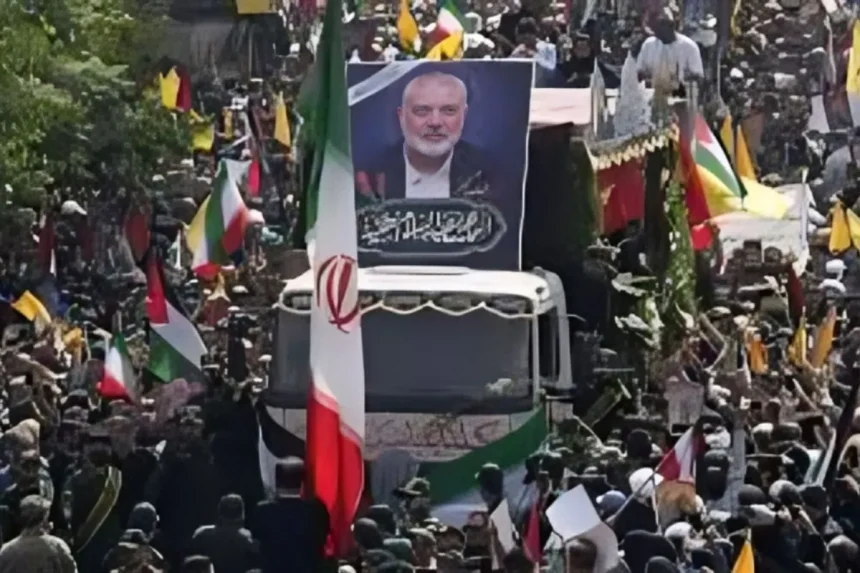Early Life and Background
Ismail Haniyeh was born on January 29, 1963, in the Al-Shati refugee camp in Gaza. His family fled from their hometown of Al-Jura during the 1948 Arab-Israeli War, like many other Palestinian families. Haniyeh grew up amid poverty and hardship, witnessing the struggles of refugees firsthand. This early exposure to displacement and conflict deeply influenced his worldview.
Education and Political Awakening
Haniyeh attended the Islamic University of Gaza, where he studied Arabic literature. The university was a hub for political activism and Islamic thought. During his time there, Haniyeh became involved in the Islamic student movement, aligning himself with the Muslim Brotherhood. This involvement laid the groundwork for his future political career. He graduated in 1987, the same year the First Intifada began, a period of intensified Palestinian-Israeli conflict.
Rise in Hamas
In 1987, Hamas was founded as an offshoot of the Muslim Brotherhood. It aimed to resist Israeli occupation through various means, including military action. Haniyeh quickly rose through the ranks due to his dedication and organizational skills. He was arrested by Israeli authorities in 1989 for his involvement in the First Intifada and spent three years in prison. This imprisonment only strengthened his resolve and commitment to the cause.
Leadership and Strategy
After his release, Haniyeh continued to climb the ranks within Hamas. By the late 1990s, he was a key figure within the organization. He was known for his ability to mediate between different factions and for his pragmatic approach. Haniyeh advocated for both military resistance and political engagement, believing that the two strategies could complement each other.
In 2004, Haniyeh became a close aide to Hamas founder Sheikh Ahmed Yassin. Following Yassin’s assassination by Israel, Haniyeh’s prominence within Hamas increased. He was appointed as the head of Hamas’ Political Bureau in 2017, solidifying his position as a leading figure.
Political Ascendancy
Haniyeh’s political career took a significant turn in 2006 when Hamas participated in the Palestinian legislative elections. Hamas won a decisive victory, and Haniyeh was nominated as Prime Minister. This victory marked a turning point for Palestinian politics, as it was the first time Hamas held significant political power. However, tensions quickly arose between Hamas and Fatah, the rival Palestinian faction led by Mahmoud Abbas.
These tensions culminated in a violent conflict in 2007, resulting in Hamas taking control of the Gaza Strip. Haniyeh continued to serve as Prime Minister in Gaza, while Fatah controlled the West Bank. This division created a complex political landscape, with ongoing disputes between the two factions.
International Relations and Challenges
As a leader, Haniyeh faced numerous challenges. The international community largely isolated Hamas, viewing it as a terrorist organization. This designation led to economic sanctions and diplomatic pressure. Despite these challenges, Haniyeh sought to build alliances with regional powers such as Iran, Turkey, and Qatar. These relationships provided Hamas with financial support and political backing.
Haniyeh’s leadership style was characterized by his attempts to balance militant resistance with political engagement. He supported ceasefires and negotiations with Israel when he believed they could benefit the Palestinian people. However, he also maintained Hamas’ commitment to armed resistance, seeing it as a legitimate means of achieving Palestinian rights.
The Role in Gaza’s Struggles
Under Haniyeh’s leadership, Gaza faced significant challenges. The Israeli blockade, imposed in 2007, severely restricted the movement of goods and people, leading to a humanitarian crisis. Gaza’s economy struggled, and its infrastructure deteriorated. Haniyeh often blamed these conditions on Israeli policies and international neglect.
Despite these hardships, Haniyeh remained a popular figure in Gaza. His supporters admired his dedication to the Palestinian cause and his ability to navigate the complex political landscape. Critics, however, argued that his leadership had failed to bring about meaningful change and had exacerbated Gaza’s suffering.
Assassination and Legacy
On August 2, 2024, Ismail Haniyeh was assassinated in Tehran. The attack was widely attributed to Israel, although Israel did not officially claim responsibility. His death marked a significant moment in the Israeli-Palestinian conflict. Haniyeh’s assassination removed a key figure from Hamas’ leadership, potentially shifting the organization’s direction.
Haniyeh’s legacy is complex. To his supporters, he was a steadfast leader who fought for Palestinian rights and sovereignty. To his critics, he was a polarizing figure whose strategies often led to more conflict and suffering. Regardless of perspective, his impact on Palestinian politics and the broader Middle East is undeniable.
Conclusion
Ismail Haniyeh’s life story reflects the broader struggles and complexities of the Israeli-Palestinian conflict. From his early days in a refugee camp to his leadership of Hamas, Haniyeh remained committed to his vision of Palestinian resistance and self-determination. His assassination is a reminder of the ongoing volatility and challenges in the region, and his legacy will continue to influence the course of Palestinian politics for years to come.
Get more info: https://www.timelinetale.com/


